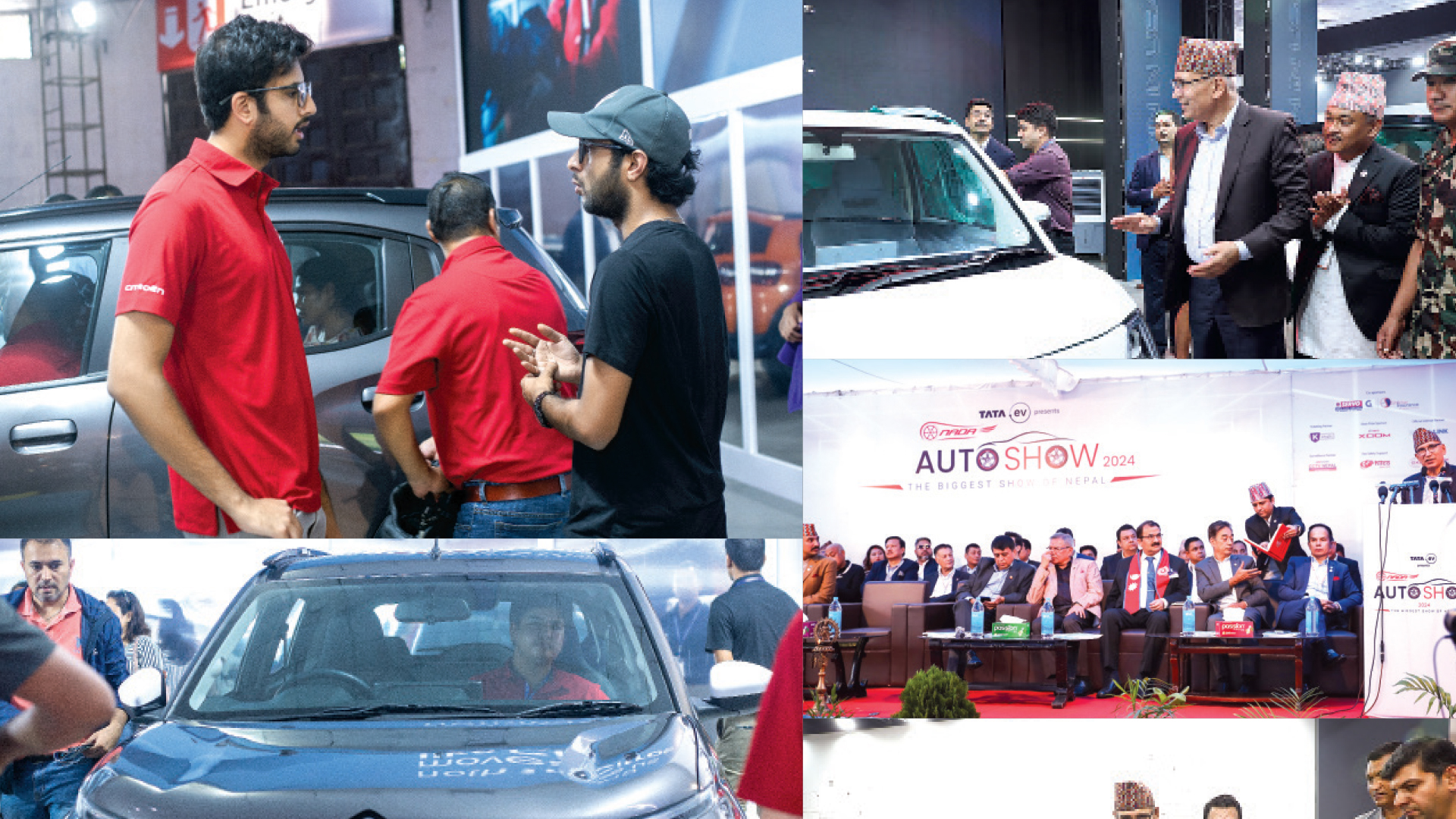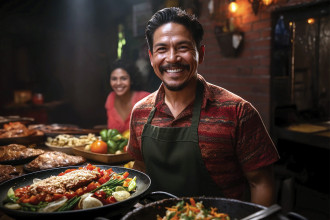
Nepal Rastra Bank (NRB), the central regulatory and monetary authority, has envisioned addressing the challenges of the economy by issuing an accommodative Monetary Policy for Fiscal Year 2024/25. The stance of any Monetary Policy is determined by two key factors: the economic situation of the country and the financial health of banks and financial institutions (BFIs).
High credit rates have not only hindered the growth of the productive sector but have also negatively impacted consumption. In a consumption-driven economy, this has had a multiplier effect, resulting in a significant drop in government revenue and a slowdown in the automobile industry, where the government has imposed some of the highest taxes, especially on ICE (internal combustion engine) vehicles, with rates exceeding 250%.
By late 2024, the automobile industry showed signs of recovery, supported by attractive interest rates from banks and financial institutions (BFIs) and the introduction of affordable electric vehicles for the middle class. As cost-effectiveness and accessible financing options improved, consumers were quick to make purchases.
The recent NADA Auto Show, the country’s largest auto exhibition, recorded 82,470 attendees. The show featured both new and existing models of four-wheelers and two-wheelers, with a strong focus on electric vehicles, alongside banks and hire purchase companies.
|
Types of vehicles |
Purpose |
Loan to value ratio |
|
Electric |
Private and commercial |
up to 80% |
|
ICE |
Private |
up to 50% |
|
ICE |
Commercial |
up to 70% |
Financing provision
Banks and financial institutions offer up to 80% financing for electric vehicles and 50% for ICE vehicles for individual buyers. A purchaser is required to make a 20% down payment for electric vehicles intended for personal use (private vehicles), while a 50% down payment is required for petrol/diesel vehicles. For commercial purposes or if the purchaser is a company, they can secure up to 70% financing of the total value for ICE vehicles. According to Nepal Rastra Bank’s regulations, banks cannot finance more than 80% for electric vehicles and 50% for ICE vehicles. However, they are allowed to finance up to 70% for ICE vehicles used for commercial purposes.
The loan-to-value (LTV) ratio for ICE vehicles was increased alongside the ban on import of jeeps, cars, vans and SUVs. The 50% cash margin requirement for opening L/C (letter of credit), imposed by the central bank two years ago, was later revoked following continuous protests from automobile dealers. Dealers expressed their dissatisfaction by placing black banners at the front of showrooms, demanding the reversal of restrictive policy measures from Nepal Rastra Bank. In the meantime, NADA organised its flagship NADA Electric Vehicles Show in 2022, though with a very limited selection of EVs.
Table 2: Auto Loan Schemes
|
Bank |
Credit scheme |
|
Nabil Bank |
Nabil Bank has been offering auto loans at 8.25% for 5 years and 8.49% for 7 years. This scheme is applicable for both electric and fossil fuel based private vehicles. |
|
Sanima Bank |
Sanima Bank has been offering auto loans at 8.49% for 7 years under its ‘Go Electric, Go Green’ scheme. |
|
Agricultural Development Bank |
Agricultural Development Bank (ADBL) has been offering cheaper interest rate at 7.99% under floating scheme and 8.99% for 7 years fixed scheme. ADBL has said that it has minimised service charge by 0.50% to be competitive in the market. |
|
Laxmi Sunrise Bank |
Laxmi Sunrise Bank has been offering 8.99% interest rate on automobiles for 7 years. |
|
NMB Bank |
NMB Bank has been offering 7 years fixed interest rate on auto loan at 8.64%. The bank has designed auto loan with 1% premium on top of the base rate. |
|
Global IME Bank |
Global IME Bank has been offering 7.99% interest rate on auto loans under floating scheme, while under the fixed scheme borrowers can avail loan at 8.49% for 7 years. |
|
Machhapuchchhre Bank |
Machhapuchchhre Bank has been offering up to 70% financing for EVs at 9% interest rate. |
|
Himalayan Bank |
Himalayan Bank has been offering 9.51% interest on auto loans and 10.75% on hire purchase for 7 years. |
|
Everest Bank |
Everest Bank has been offering auto loans at base rate+1.54%, and for those who are willing to avail loan for over 7 years have to pay 2% premium on top of base rate. |
|
Standard Chartered Bank |
Standard Chartered Bank has been offering auto loans at 9.49%. The bank has offered 1.62% premium plus base rate for first year and 2% premium on top of base rate for second year. |
|
Nepal Investment Mega Bank |
Nepal Investment Mega Bank has been offering 12% interest rate on auto loans |
Credit schemes
BFIs, flush with excess liquidity, have been offering relatively cheaper auto loans with various schemes of fixed and floating rates. Many banks have designed loan products with a minimal premium over the base rate. In Nepal, households typically make significant purchase decisions ahead of two major festivals, Dashain and Tihar, in the country as this is a time when people receive bonuses and invest in family. To protect clients from interest rate fluctuations, BFIs have been offering fixed interest rates on auto loans.
Auto loan schemes of some of the banks are presented in table 2.
In addition to BFIs, various hire purchase companies are offering vehicle financing. Some authorised automobile dealers have even established hire purchase companies as subsidiaries to provide financing services to their customers.
According to Nepal Rastra Bank, BFIs’ loan expansion in vehicles and parts experienced negative growth in the past two fiscal years due to a focus on loan recovery rather than expansion. Loan growth in vehicles and parts declined by 10.6% in Fiscal Year 2023/24, following a negative growth of 5.35% in FY 2022/23.
To attract customers, auto dealers have introduced various schemes, including gears, gadgets and accessories, along with accessible and affordable credit options in coordination with BFIs.
Table 3: Taxes on Batteries
|
Battery capacity |
Customs |
Excise |
|
50 kilowatts |
15% |
5% |
|
51- 100 kilowatts |
20% |
10% |
|
101- 200 kilowatts |
30% |
20% |
|
201 kilowatts+ |
50% |
10% |
EVs and Tax Policy
As part of an initiative to promote clean transport solutions, the government introduced tax incentives for electric vehicles (EVs), both for public transport and private use, following the supply disruptions from the southern border in 2015, which led to an acute fuel shortage. In the subsequent Fiscal Year 2016/17, the government significantly reduced the taxes levied on electric vehicles. Incumbent Finance Minister, Bishnu Prasad Paudel, is credited with lowering the EV tax. Later, former Finance Minister, Yubraj Khatiwada, increased the tax on EVs, but Paudel once again reduced the rates raised by Khatiwada in 2020.
Table 4: Import of EVs in FY 2023/24
|
Vehicle types |
Number of vehicles |
Import value (Rs in billion) |
|
Electric three wheelers |
9,057 |
0.93 |
|
Electric jeep, car, van (50 kw) |
4,571 |
8.60 |
|
Electric jeep, car, van (50 kw <- 100 kw) |
6,885 |
19.67 |
|
Electric car, jeep & van > 101KW to <=200KW |
217 |
1.00 |
|
Electric Car, Jeep, Van with motors pick power 201KW to 300 KW |
27 |
0.19 |
|
Electric Car, Jeep, Van with motors pick power exceeding 300KW |
1 |
0.013 |
|
Buses with only electric motor for population |
11 |
0.36 |
|
Mini buses (15- to 25-seater) With only electric motor for propulsion |
336 |
1.21 |
|
Micro buses (11- to 14-seater) with only electric motor for propulsion |
537 |
1.66 |
|
Jeep, car & van only electric motor for propulsion |
446 |
1.03 |
|
201 kilowatts+ |
50% |
10% |
Presenting the budget for FY 2024/25, then Finance Minister, Barsha Man Pun, made slight upward revisions to the EV tax. The government raised customs duty on EVs from 10% to 15%, while a 5% excise was imposed on vehicles with a battery capacity of up to 50 kilowatts. For those with 51 to 100 kilowatts, a 20% customs duty and 10% excise are enforced. For vehicles with a 101 to 200 kilowatt capacity, the customs duty is 30% with a 20% excise. For vehicles above 201 kilowatts, customs duty was increased by 20%, while the excise duty was lowered by 10%. (See table 3)
Exponential growth in EVs import
As interest rates from BFIs remain elevated and the LTV (loan to value) ratio is capped at 50%, automobile traders have shifted their focus towards importing electric vehicles. According to the Department of Customs, the share of vehicle and parts imports accounted for 5% of total imports in Fiscal Year 2023/24, amounting to Rs 78.01 billion. Of this total, electric vehicles constituted approximately 44.43% of the imports. The value of electric vehicle imports in 2023/24 stood at Rs 34.66 billion. (See table 4)
Despite economic slowdown, electric vehicle sales remain buoyant. There is an influx in the market of new brands and new models of EV vying for customer interest as seen in the recently concluded NADA Auto Show. To stay relevant in the market, established automobile companies are also shifting gear to create new alliances with EV brands, mostly from China. Automobile importers remain cautiously optimistic, but for now, all maintain a positive outlook.



-1765706286.jpg)
-1765699753.jpg)

